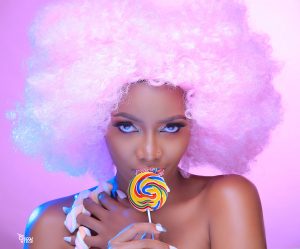Years ago, when I first started my journey into people photography, especially high-end portrait photography, I didn’t have a proper photo editing process. What I used to do was open a raw image in Adobe Camera Raw, and then I would tinker with various settings, sliding sliders left and right without really understanding what I should be doing or the right order to do it in. My goal was to turn the plain, unedited raw image into a beautiful photograph.
Table of Contents
I would then move on to Photoshop and repeat the same trial-and-error process. After a few failed attempts, it became clear to me that my workflow was chaotic and lacked structure. I needed a step-by-step framework with clear goals for each stage of the editing process. This way, every time I sat down to edit a photo, I would have a starting point, a plan for what comes next, and a clear vision of the final result.
Today, I’m excited to share with you my 10-step framework for high-end portrait photo retouching. It might sound complex, but it’s not. These steps are simply the approach that works best for me in photo processing. In this video, I’ll focus on explaining the framework itself, so I won’t dive too deep into each step. However, if there’s a particular step you’d like to learn more about, please leave a comment below, and I’ll consider making a future video dedicated to that specific step.
Also, if you ever want to skip ahead in this video, you can use the chapter markers in the progress bar below. So, let’s get started with step one, which is all about preparing the image before we move on to any other editing tasks.
Introduction to High-end Beauty Photo Editing
High-end beauty photo editing is all about refining and enhancing a subject’s features while maintaining a natural look. It involves various techniques that make a portrait more striking and aesthetically pleasing. Let’s explore these techniques step by step.
The Importance of Basic Retouching and Touch-ups
Before diving into advanced techniques, it’s essential to start with the basics. Basic retouching and touch-ups involve removing imperfections, such as blemishes, scars, and minor skin issues. These subtle changes create a smoother canvas for further enhancements.
Shaping and Liquifying Techniques
Shaping and liquifying tools allow you to sculpt and reshape facial features. You can refine the contours of the face, enhance cheekbones, and create a more balanced appearance. However, it’s crucial to exercise restraint to avoid overdoing it and creating an unnatural look.
Achieving Flawless Skin with Frequency Separation
Frequency separation is a powerful method for achieving flawless skin. It separates an image into high and low-frequency layers, enabling you to retouch imperfections while preserving the skin’s texture. This technique is a game-changer for beauty editing.
Say Goodbye to Blotches
Blotches and uneven skin tones can be distracting in a photo. In beauty editing, you can easily remove blotches and ensure a consistent skin tone, providing a polished and professional look.
Enhancing Depth with Burn and Dodge
To add depth and dimension to a photo, the burn and dodge tools come in handy. You can darken or lighten specific areas of the image to create a three-dimensional effect, making the subject pop.
Brightening Teeth and Whitening Eyes
The eyes and teeth are focal points in a portrait. Whitening teeth and brightening eyes can enhance the subject’s overall appearance, creating a captivating and engaging image.
The Art of Color Grading
Color grading is the final touch in beauty photo editing. It involves adjusting the overall color scheme to create a specific mood or atmosphere. Proper color grading can make a significant difference in the final outcome.
Professional Tools and Software
High-end beauty photo editing requires professional tools and software, such as Adobe Photoshop and Lightroom. Familiarize yourself with these programs to make the editing process more efficient.
Mastering the Workflow
To become proficient in beauty photo editing, it’s essential to establish a workflow that works for you. Consistency and efficiency are key to producing high-quality results.
Retaining a Natural Look
While it’s tempting to go all out with editing, remember that the goal is to enhance natural beauty, not create an entirely new person. Retain the subject’s essence and authenticity.
Common Mistakes to Avoid
In the world of beauty editing, there are common mistakes that beginners often make. Be aware of these pitfalls and learn how to avoid them for better results.
Practice Makes Perfect
Becoming a skilled beauty photo editor takes practice. The more you work with these techniques, the better you’ll become at creating captivating portraits.
Conclusion
High-end beauty photo editing is an art that requires both technical skill and a keen eye for detail. With the right techniques and tools, you can transform ordinary photos into extraordinary works of art.
